Building a $2,000 1440p Gaming PC
Combining some of NZXT’s finest RGB to create a 60fps 1440p Gaming PC
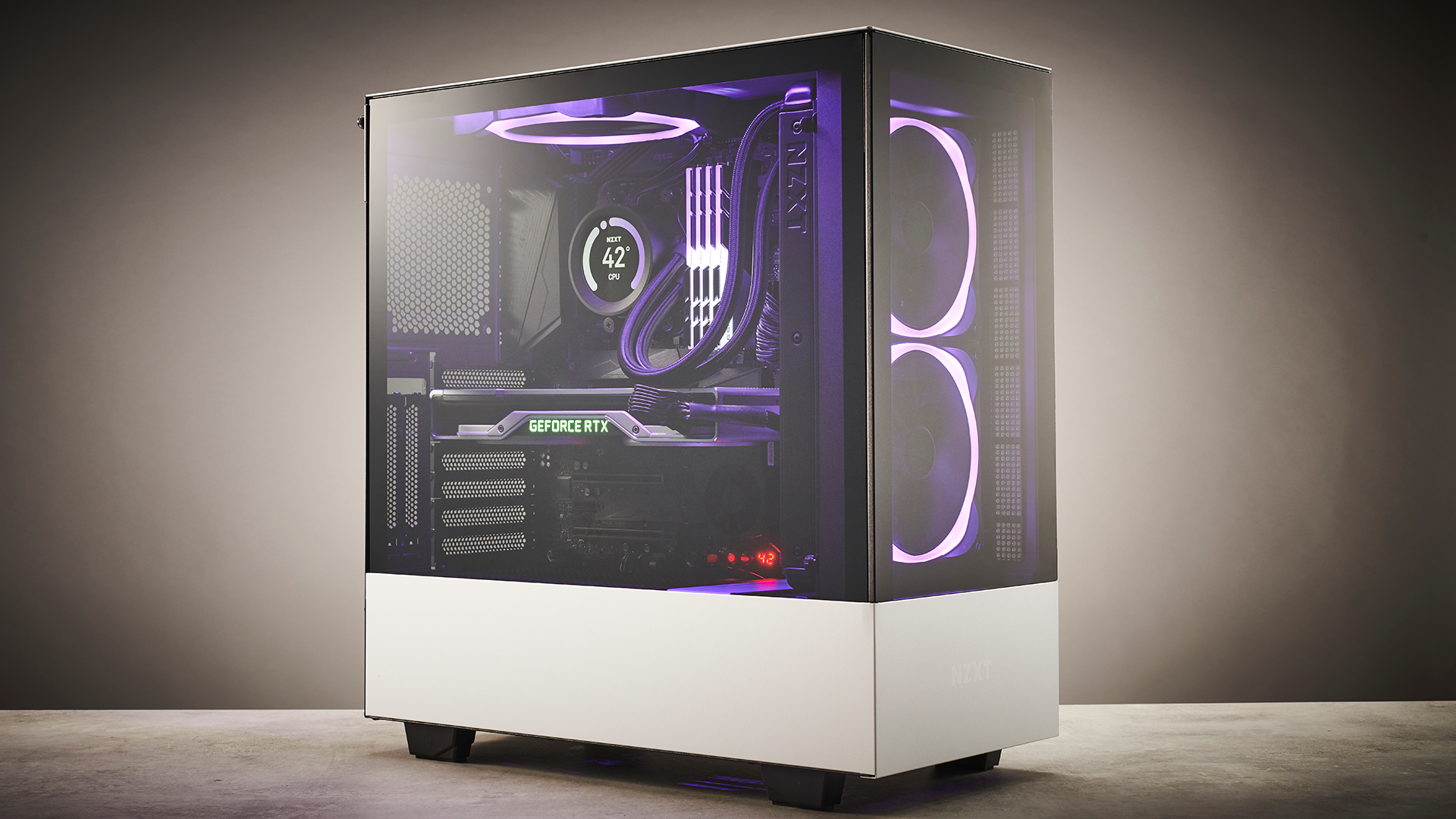
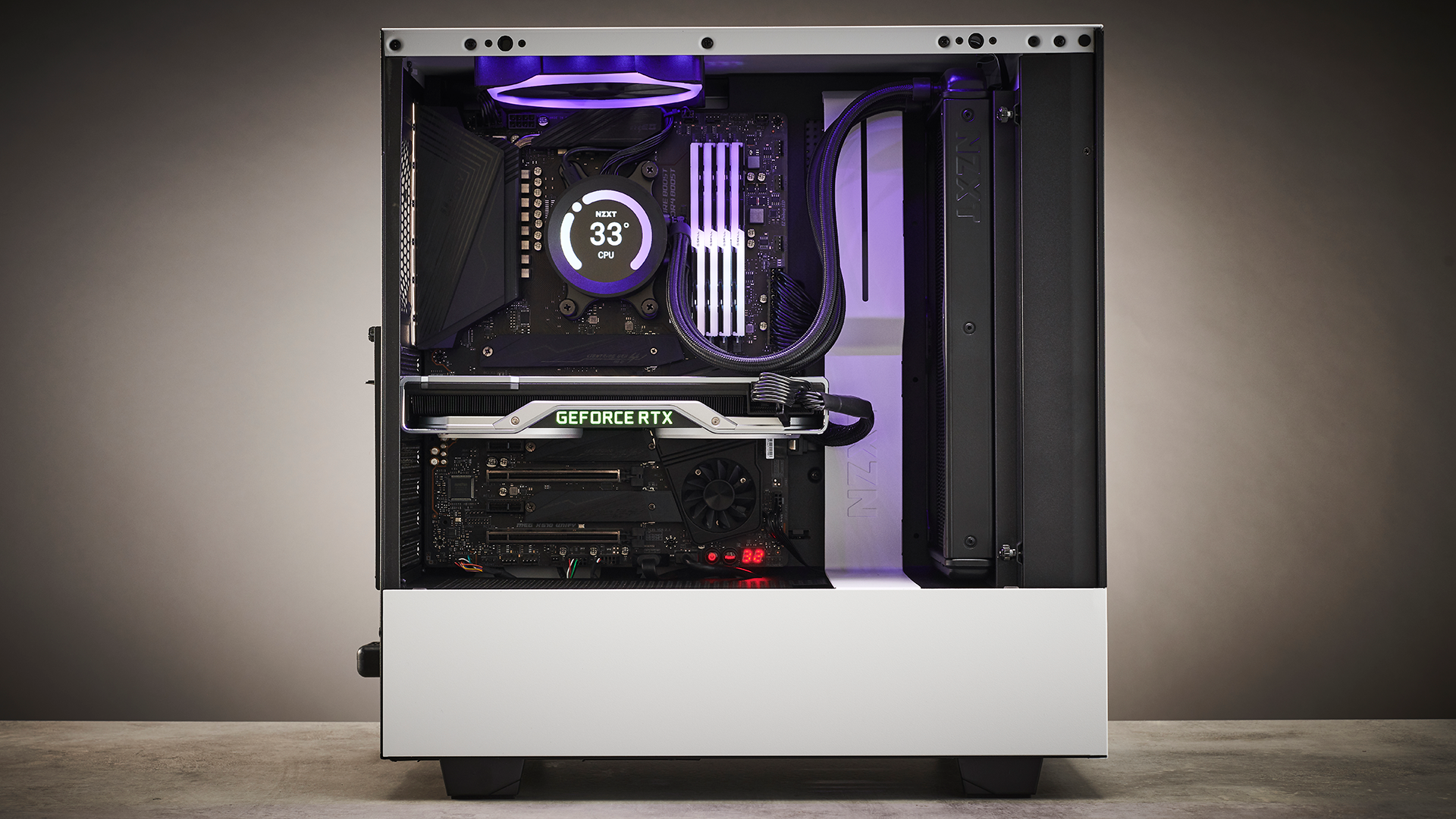
Speaking of, although they look great, the only downside to the fans we used is their static pressure performance, and that’s definitely something you’ll see in the temperature results. AIO radiators typically have a far higher fin density than their open-loop cousins, making static pressure all the more important for good performance.
As a system builder or enthusiast, it’s good to get back to the basics every now and then with an AIO-cooled PC like this. The overall aesthetic goal for this NZXT build was to showcase what you can do with some subtle RGB lighting configured in the correct way, and it’s hard to deny just how clean it looks, even with those stock cables. The amount of lighting software you have to install to control the fans, RAM, and top of the cooler is frustrating, but on the whole we think it’s worth it for the final results.
As for the build process, we didn’t run into many problems. That said, the radiator bracket is a bit finicky to get into position once it’s got both the radiator and the fans installed on either side of it. Additionally, installing the top exhaust fan after the cables were installed was also a bit of a struggle.
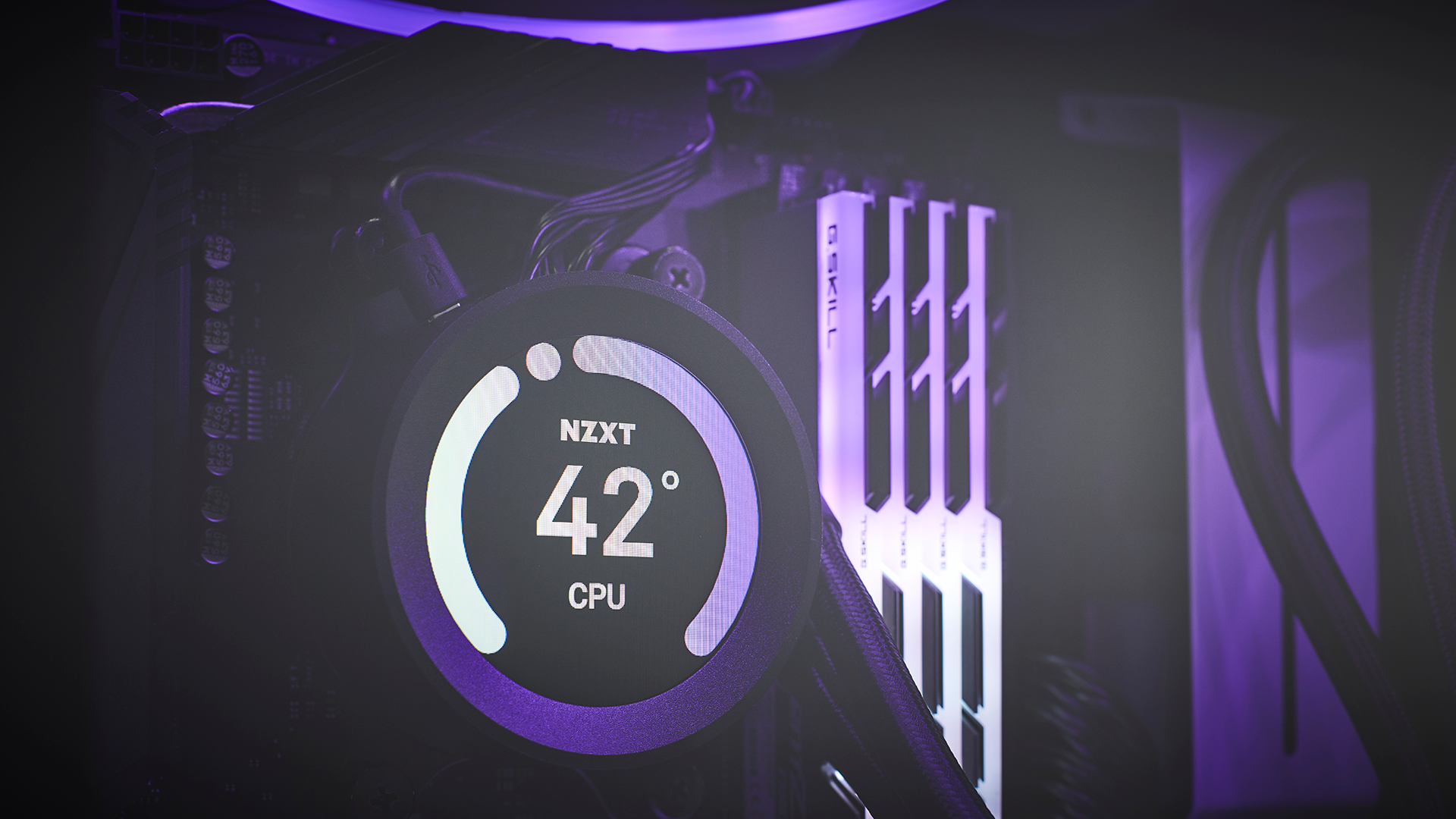
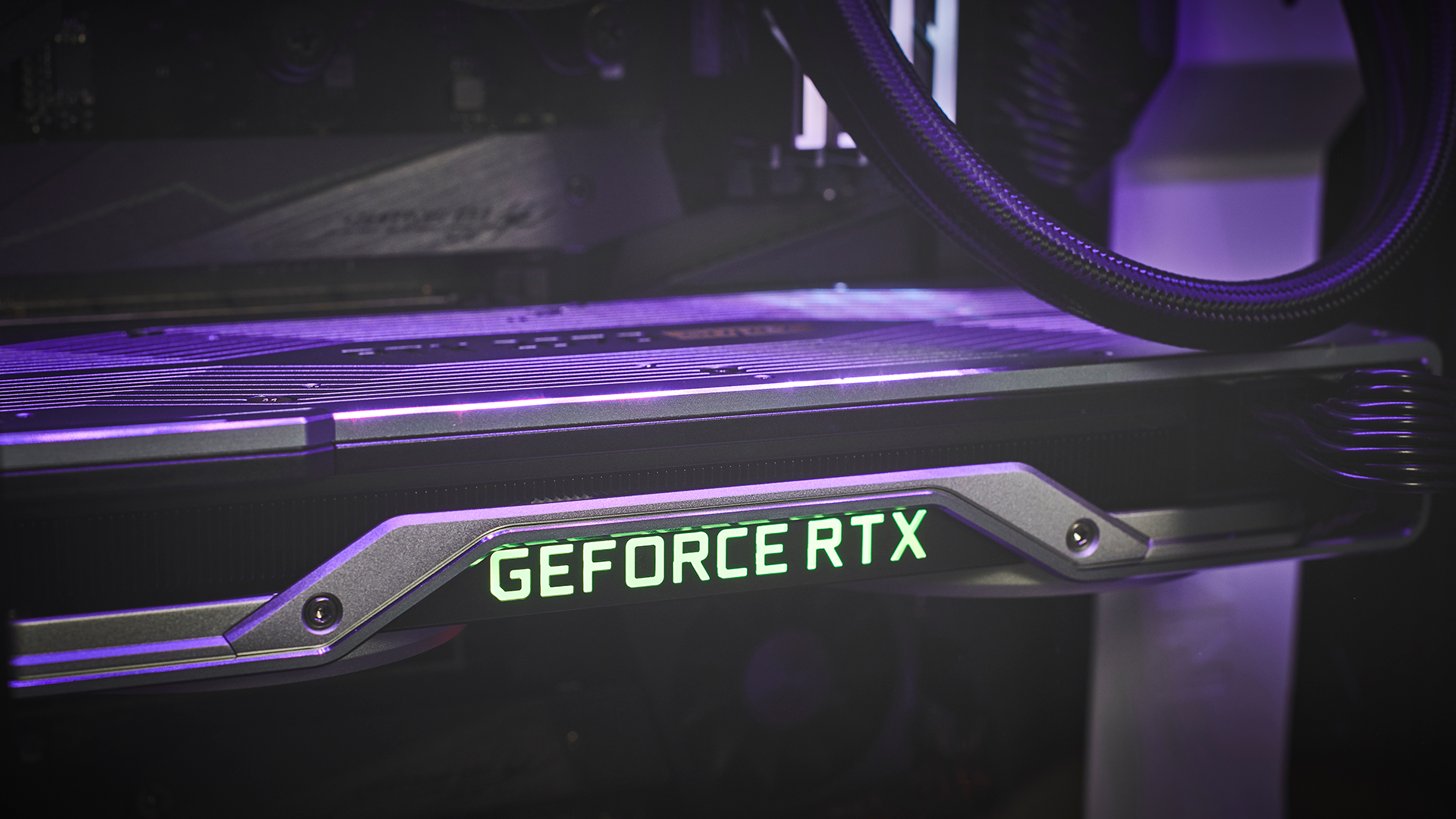

1440p Gaming
We aimed to hit that 1440p 60fps sweet spot with this build, and perhaps unsurprisingly the RTX 2070 Super paired with that Ryzen 5 3600X performs well in that regard. In fact, if you take a quick glance over the gaming benchmarks, you’ll notice this system often outperforms the liquid-cooled “Console Killer” that we built back in April 2019.
That system featured an Asus ROG Strix GeForce RTX 2080 and an AMD Ryzen 5 2600X. It really does go to show how both of those platforms have matured over the last year, especially in regards to Ryzen / Zen 2’s gaming performance. And yet the more impressive figure is the price difference, as our CPU/GPU combo here is 35% cheaper than what was featured in that liquid-cooled build back then, and that’s without including the waterblocks.
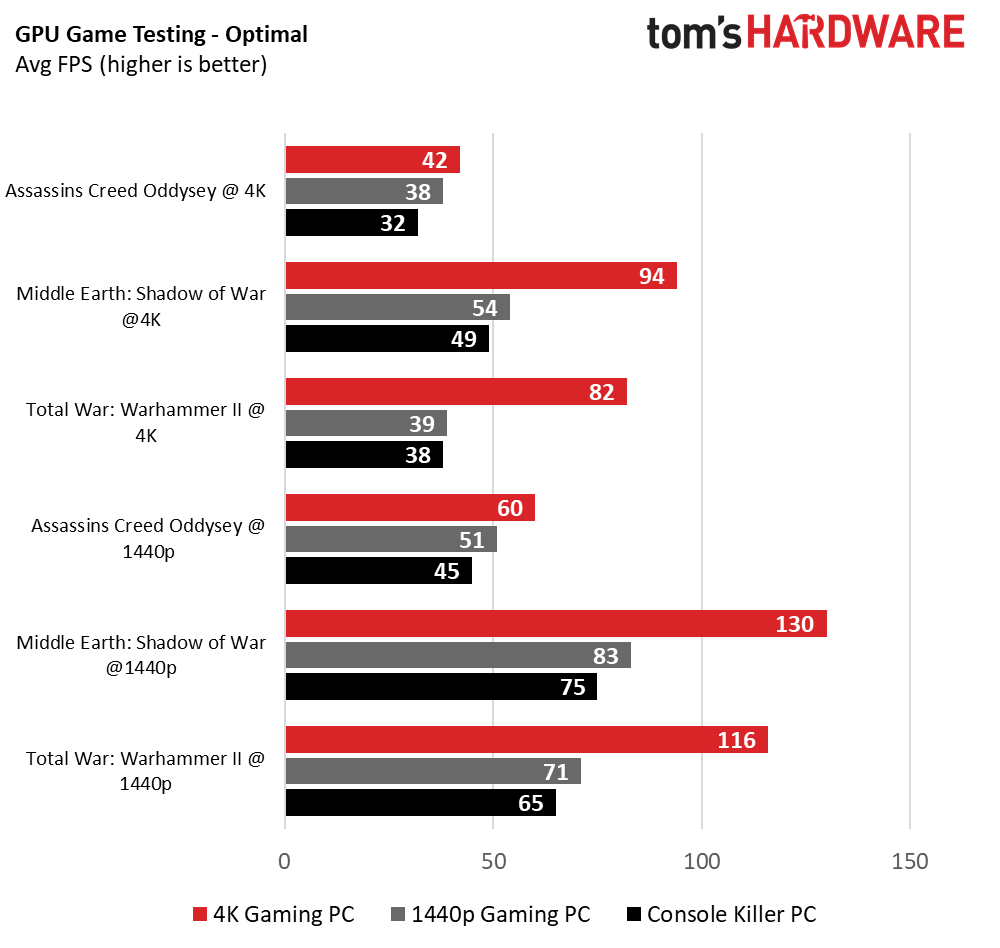
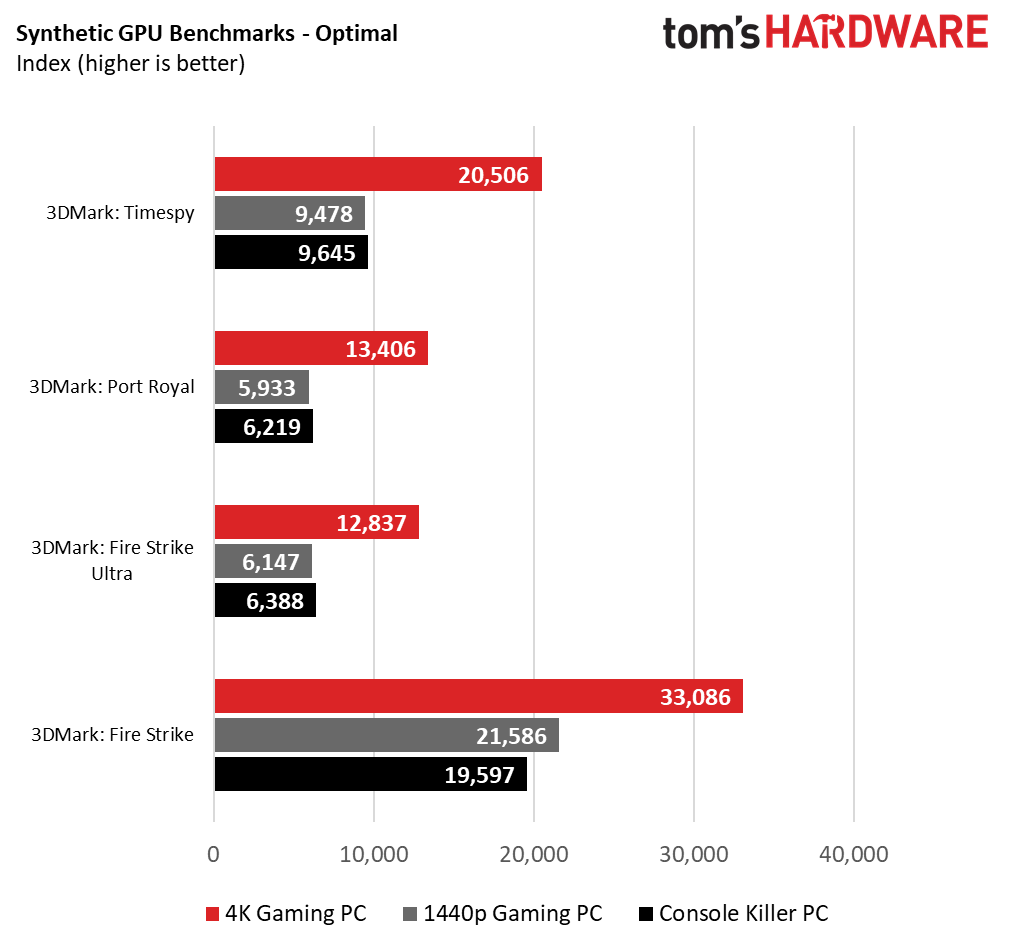
System and Temperature Benchmarks
When it came to temperatures--unsurprisingly compared to our liquid-cooled systems--the Kraken build did register somewhat higher, especially in more-aggressive 3D render based operations. During our consecutive CineBench R15 runs, we saw temps climb as high as 77 C, and with Prime95’s stock blends test the processor hit a whopping 84 degrees. With better performing fans, perhaps EKWB’s new Vardar X3Ms (so as to not sacrifice that RGB element), temperatures would drop.
Get Tom's Hardware's best news and in-depth reviews, straight to your inbox.
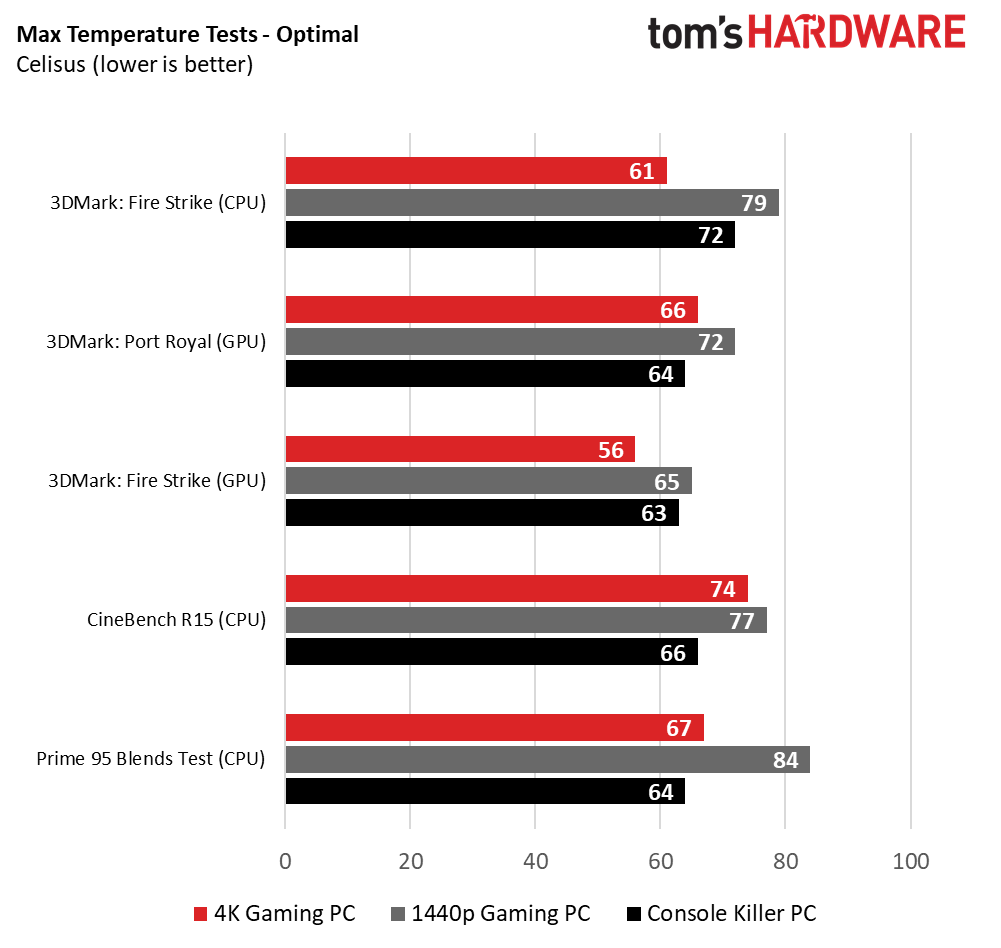
Aside from temperatures, overall system performance looked good. 203 points in CineBench R15’s single core test is definitely an improvement on the Ryzen 5 2600X found in the Console Killer, and primary SSD drive performance was also solid, although we would say those PCIe 4.0 writes on the 500GB drive leave a lot to be desired compared to the larger-capacity variants.
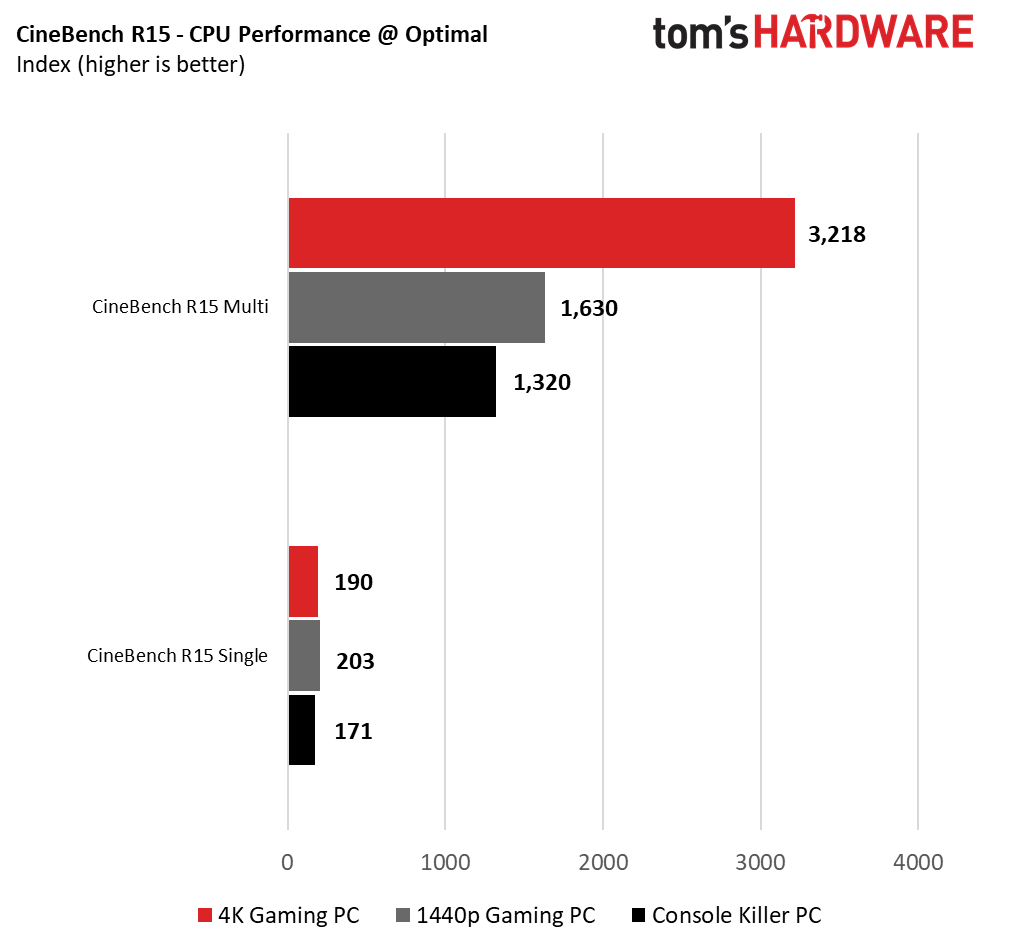
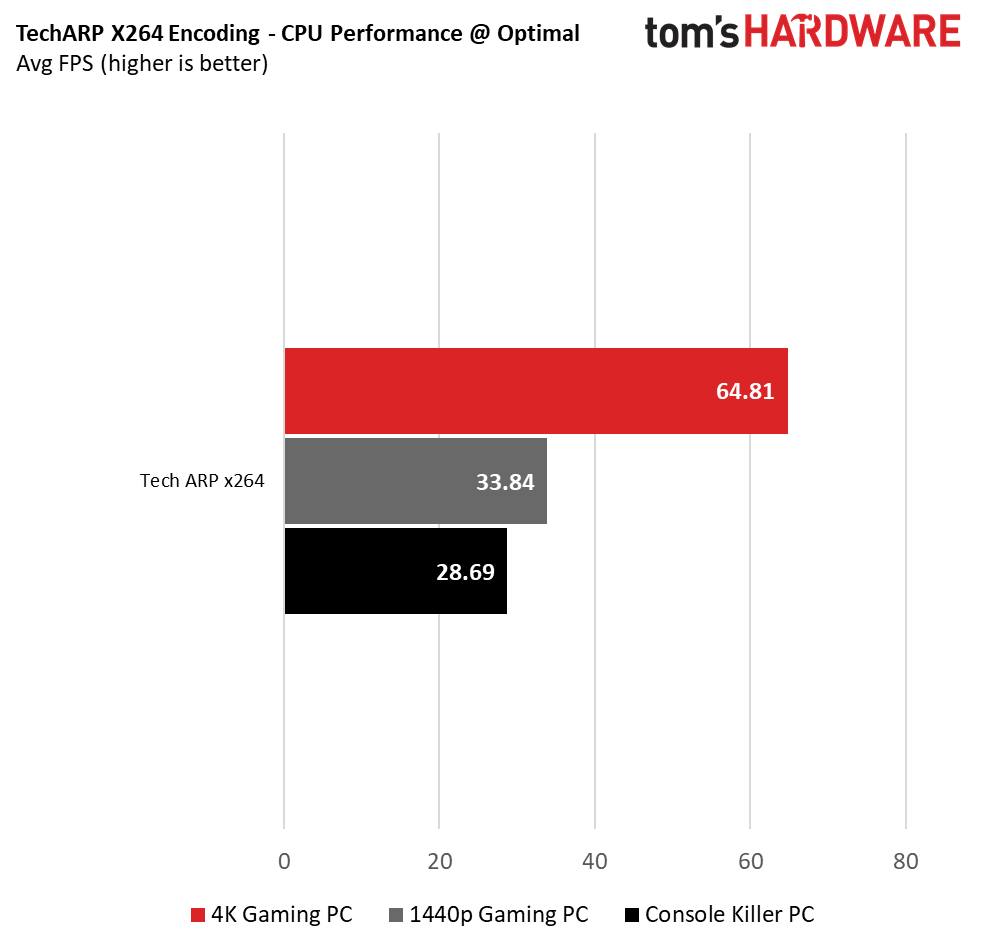
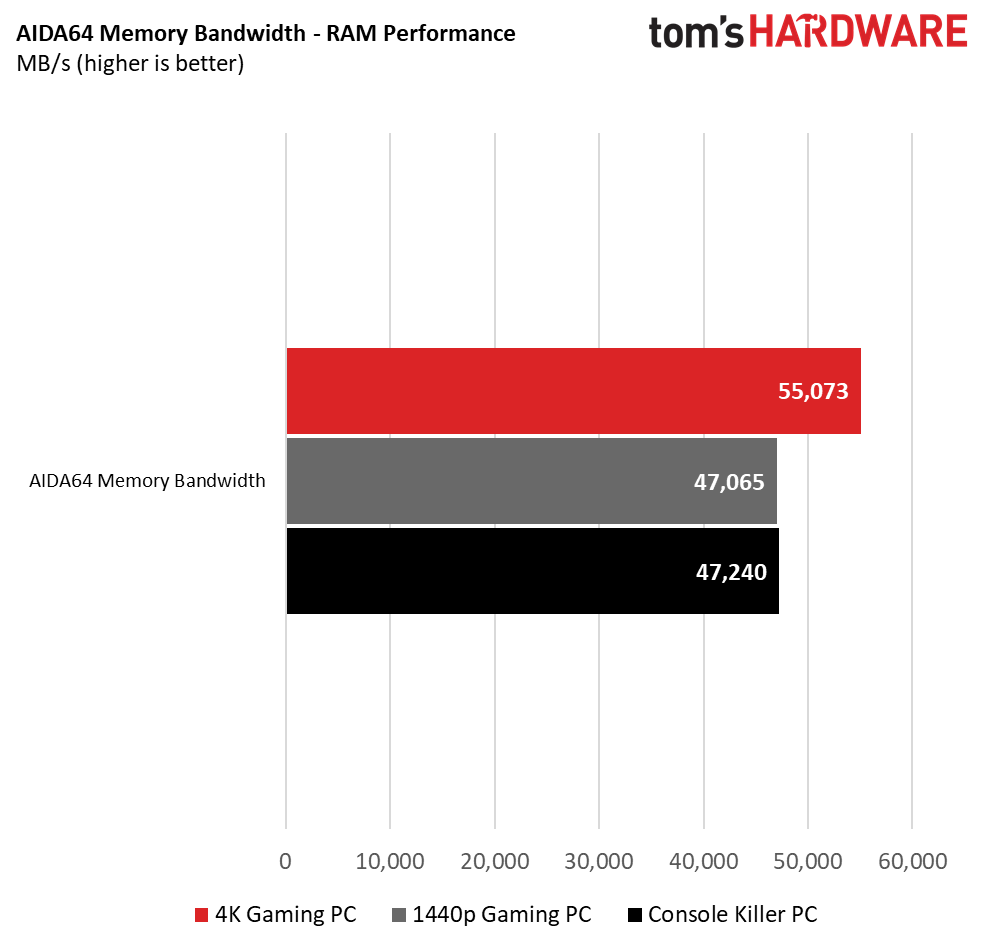
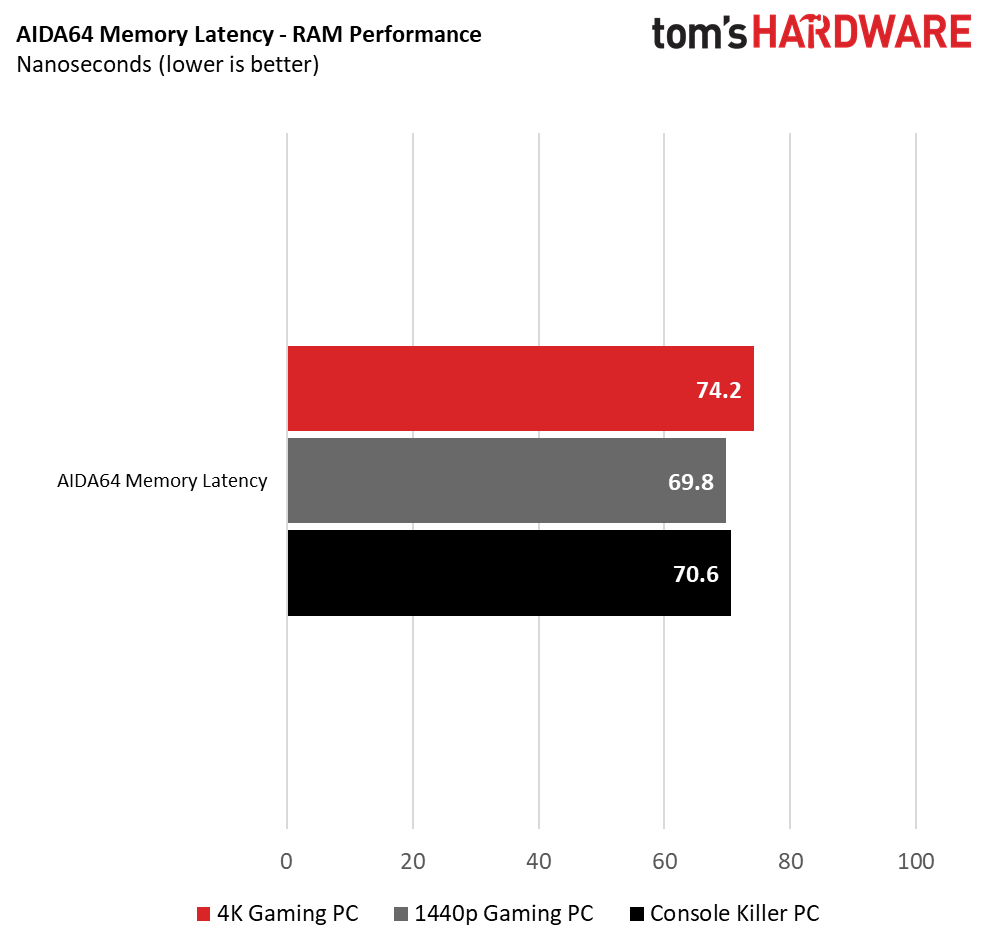
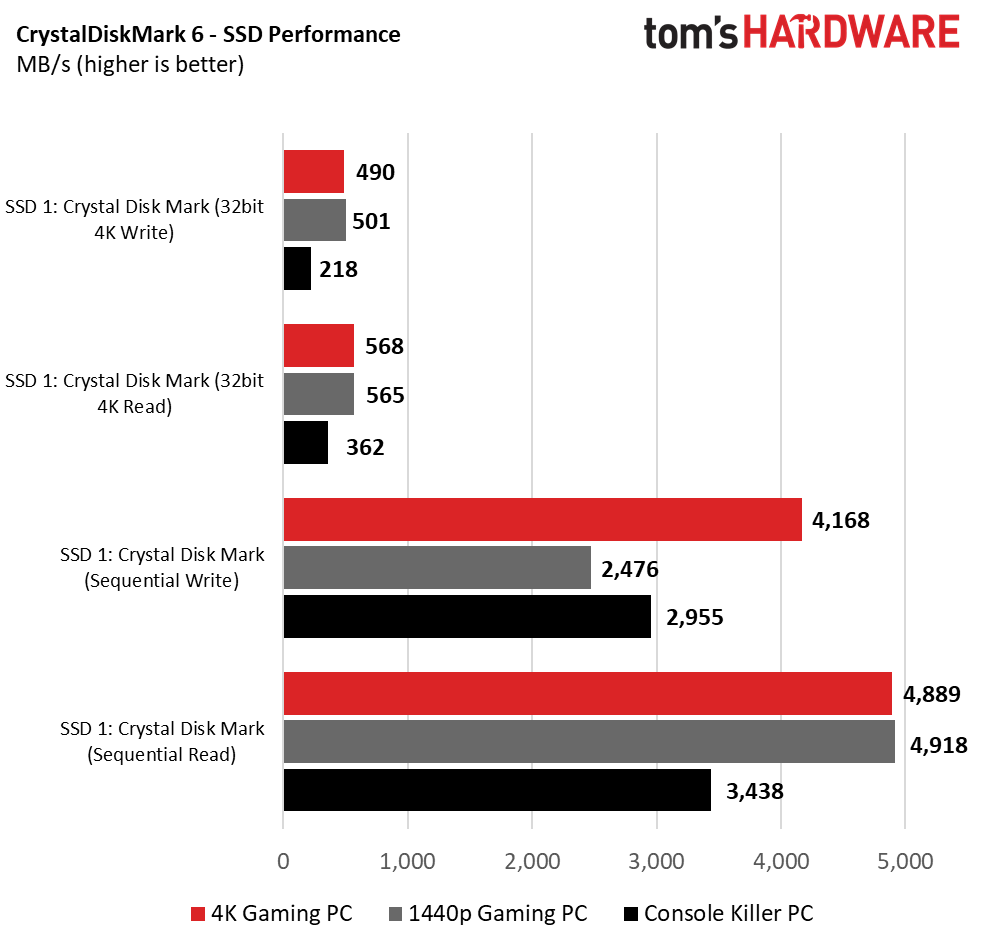
Conclusion
As always, you could spend more on the graphics card and CPU and get better performance, or spend more on custom cooling and cables and make this system look better. But we’re mostly pleased with the results of this build with standard, sub-pinnacle parts. Gaming performance at 1440p was good. The NZXT case, cooler and fans -- and particularly the LCD display on the Kraken cooler -- helped the system look slick without going the gaudy route. And our total build budget remained at least in the realm of affordability for most serious gamers and enthusiasts.
One easy way to shave down the price here would be to go with a technically slower PCIe 3.0 boot SSD (which should still load your games and levels in roughly the same amount of time) and opt for a hard drive for your bulk storage. And if you’re primarily interested in gaming and basic productivity, dropping the RAM down to 16GB of RAM will also save $100 without affecting your frame rates. But if you decide you want 32GB in a year or two, you may wind up paying more, as RAM prices are on the rise again.
MORE: Best Gaming Desktops
MORE: How To Build A PC
MORE: All PC Builds Content

As Associate Editor of Tom's Hardware's prestigous British division, Zak specializes in system building, case reviews and peripherals, and has a particular penchant for liquid-cooling. He's also a lover of all things Viking/Scandinavian (thus the poor attempt at a beard).
-
logainofhades What a horrible way to spend $2000. Making it pretty, vs performance, is simply never a good idea. Far superior streaming, and gaming performance.Reply
PCPartPicker Part List
CPU: AMD Ryzen 9 3900X 3.8 GHz 12-Core Processor ($418.95 @ Amazon)
CPU Cooler: EVGA CLC 280 113.5 CFM Liquid CPU Cooler ($109.99 @ Amazon)
Motherboard: MSI B450 TOMAHAWK MAX ATX AM4 Motherboard ($114.89 @ B&H)
Memory: G.Skill Ripjaws V 32 GB (2 x 16 GB) DDR4-3600 Memory ($159.99 @ Newegg)
Storage: Intel 660p 512 GB M.2-2280 NVME Solid State Drive ($62.99 @ Newegg)
Storage: Crucial MX500 2 TB 2.5" Solid State Drive ($229.99 @ Amazon)
Video Card: EVGA GeForce RTX 2080 SUPER 8 GB BLACK GAMING Video Card ($699.99 @ Amazon)
Case: NZXT H510 ATX Mid Tower Case ($69.98 @ Amazon)
Power Supply: SeaSonic FOCUS Plus Gold 750 W 80+ Gold Certified Fully Modular ATX Power Supply ($114.99 @ B&H)
Total: $1981.76
Prices include shipping, taxes, and discounts when available
Generated by PCPartPicker 2020-03-13 10:58 EDT-0400 -
gfg Choosing the B450 chipset for the Ryzen 3900 is not a smart choice either. Mandatory X570.Reply -
logainofhades Replygfg said:Choosing the B450 chipset for the Ryzen 3900 is not a smart choice either. Mandatory X570.
The B450 Tomahawk max VRM's can handle a 3900x. An x570 is not mandatory. Some x570's actually have worse VRM's than that board. -
AnimeMania Do you really need 32 GB of RAM? I would get 16 GB of RAM take the 70 or so dollars and get a 3 to 4 GB mechanical HardDrive to store old games.Reply -
logainofhades ReplyAnimeMania said:Do you really need 32 GB of RAM? I would get 16 GB of RAM take the 70 or so dollars and get a 3 to 4 GB mechanical HardDrive to store old games.
For a streaming rig, 32gb isn't exactly a bad idea, to give you a bit of headroom, as games start using more ram. -
gfg In my opinion, it is best to look for a balance of components and not be tied to a figure as exact as U$D 2000. You can spend +/- 200 will not change the concept of purchase.Reply
Ryzen 7 3700X,
good x570 motherboard (for future updates CPU)
RTX 2070
2x16 GB Ram
1TB PCE 3.0 SSD / optional 2TB conventional disk
dedicated CPU cooler
good power supply
and finely cabinet aesthetics. -
SirCrono Reply
I was thinking the same while reading this article. What good is the pretty case if I'm getting 50 fps in a game?logainofhades said:What a horrible way to spend $2000. Making it pretty, vs performance, is simply never a good idea. Far superior streaming, and gaming performance.
PCPartPicker Part List
CPU: AMD Ryzen 9 3900X 3.8 GHz 12-Core Processor ($418.95 @ Amazon)
CPU Cooler: EVGA CLC 280 113.5 CFM Liquid CPU Cooler ($109.99 @ Amazon)
Motherboard: MSI B450 TOMAHAWK MAX ATX AM4 Motherboard ($114.89 @ B&H)
Memory: G.Skill Ripjaws V 32 GB (2 x 16 GB) DDR4-3600 Memory ($159.99 @ Newegg)
Storage: Intel 660p 512 GB M.2-2280 NVME Solid State Drive ($62.99 @ Newegg)
Storage: Crucial MX500 2 TB 2.5" Solid State Drive ($229.99 @ Amazon)
Video Card: EVGA GeForce RTX 2080 SUPER 8 GB BLACK GAMING Video Card ($699.99 @ Amazon)
Case: NZXT H510 ATX Mid Tower Case ($69.98 @ Amazon)
Power Supply: SeaSonic FOCUS Plus Gold 750 W 80+ Gold Certified Fully Modular ATX Power Supply ($114.99 @ B&H)
Total: $1981.76
Prices include shipping, taxes, and discounts when available
Generated by PCPartPicker 2020-03-13 10:58 EDT-0400
Your build is much much better. -
Gurg TH AMD processor reviews all tell us what a wonderful deal the cheap AMD Wraith Spire CPU cooler is. Why did you then waste money on a $234 NZXT AIO (a very good AIO) rather than just using the cheap AMD enclosed cooler that limits the CPU overclocking ability and system performance? LOLReply -
sizzling This build is like buying a Ferrari at full price and then sticking a 200bhp engine in it and running cheap tyres. Might look good but performance sucks.Reply -
chill1221 GTX 1080 tiReply
https://www.ebay.com/itm/EVGA-GeForce-GTX-1080-Ti-SC-Black-Edition-GAMING-11GB-GDDR5X-Graphics-Card/124089956485?hash=item1ce4567885:g:K9oAAOSwXc1eOwp6
Just saying...